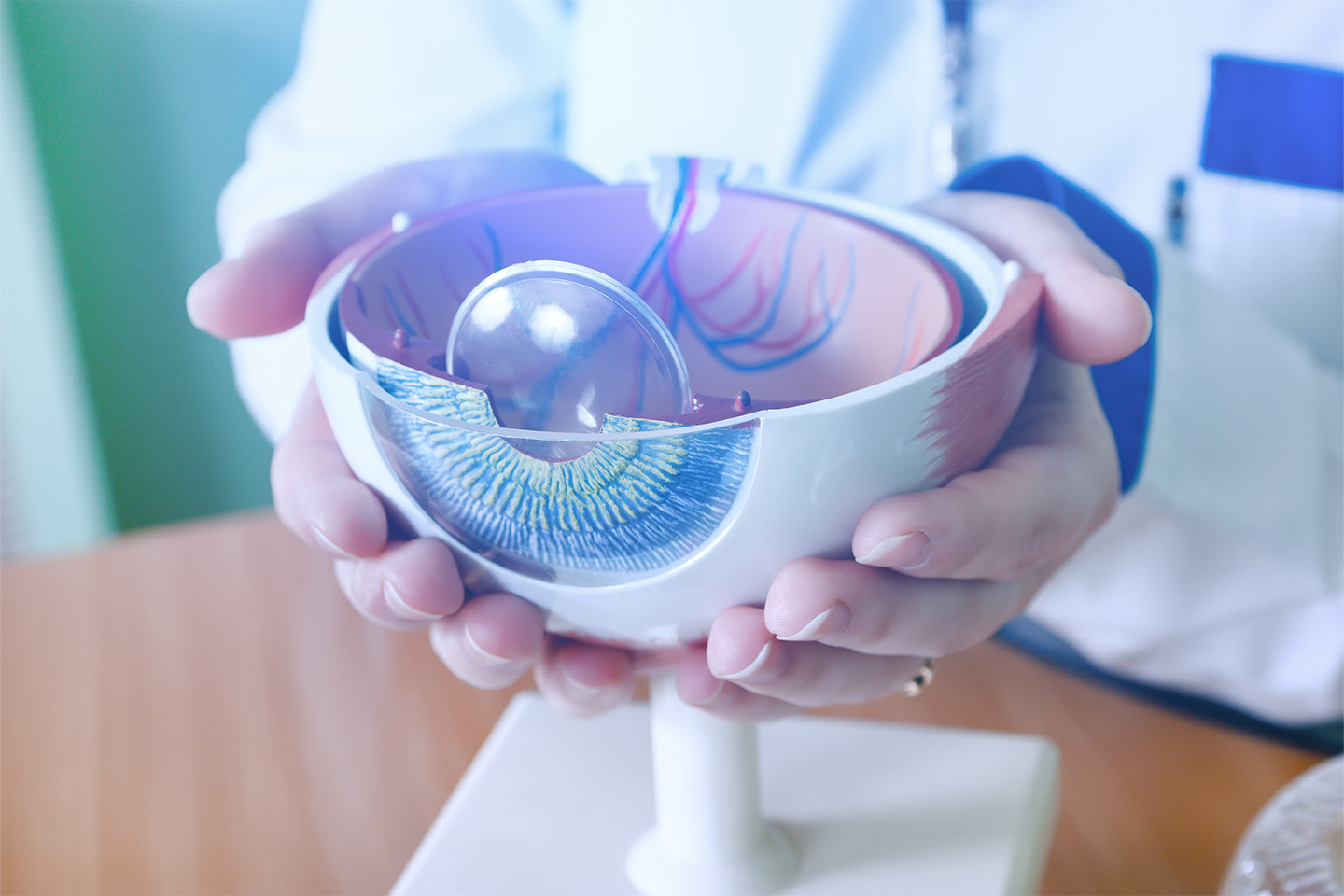The Vision Puzzle

How does vision work?
The eye itself functions not too differently from a camera, the opening in the eye collects light and the lens in the eye focuses it onto a light-sensitive membrane at the back of the eye.
The level of light that enters is governed by circular and radial muscles in the iris. These muscles contract and relax to shift the size of the pupil, however before the light enters the eye it must first pass through the protective layer of the eye called the cornea (the part that is corrected during Blade-Free LASIK). After light passes through the cornea it moves to the lens, which then bends the light, focusing it down to a tiny point on the retina — located at the back of the eye.
The most common vision issues — nearsightedness, farsightedness and astigmatism — are caused by imperfections in the shape of the cornea, making the light that passes through to not focus properly.
Your retina is lined with light-sensitive receptors called rods and cones which contain pigment molecules that change shape when hit by light and convert said light into electrical signals which are then sent to the brain via the optic nerve.
What makes me see color?
The human eye can make out three wavelengths of light — Blue, red and green. With these three wavelengths combined, the brain creates millions of color combinations called tints and shades. Each of the eyes has somewhere between six and seven million cones, which contain one or more opsins — A type of color-sensitive protein.
When opsins are bombarded with photons of light, they begin to change shape producing an electrical signal that is then transmitted to the brain. Over half the cones in our eyes respond to the red wavelength, while a third respond to green, and only two percent of the cones in our eyes respond to blue light. What this means for our vision is that we can see a lot of different tones and shades in the yellow/green spectrum of light.
The final piece of the vision puzzle
So we have outlined the basic functions of the eye, and how it is able to perceive color, but there is one more important aspect of our vision that we haven’t gone over yet—Depth Perception. Our ability to see in three dimensions is courtesy of our brain being rather intelligent.
You see, each of our eyes receives all the visual feedback in two dimensions, but because they are positioned roughly two inches apart from one another they each see the world from slightly different angles. Our brain does a clever bit of image comparison between the two eyes and uses the differences in the angle to create our ability to perceive depth.
As mentioned in the beginning of this, the human eye is an incredibly complex bit of biological engineering, but thanks to the work of many scientists throughout the years, we can better understand the complexity of this natural marvel.
This better understanding of how the eye works has lead to many advances in vision correction technology and has allowed our surgeons to be able effectively give millions of patients the satisfaction of a life with better vision.
Turn To The Top Eye Doctors In Texas
Check out one of our locations below for the best eye care near you:
[DISPLAY_ULTIMATE_SOCIAL_ICONS]








